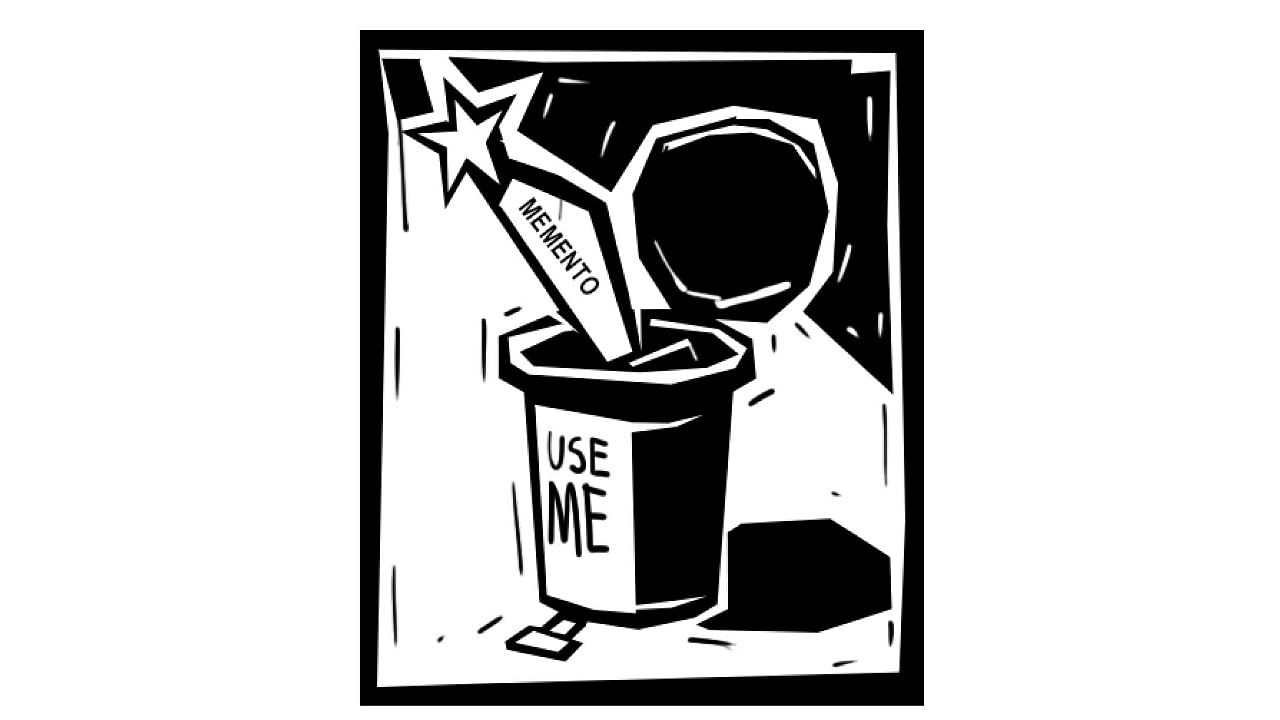
In the course of my participation in sundry seminars, conferences and talks in various events over the decades, I must have received hundreds of mementos or souvenirs, given as ‘a token of appreciation’ for my participation; for some reason, usually handed out by a back-office lady member of the organisers.
If these souvenirs were of exceptional craftsmanship, showcasing the nation’s or local artistic heritage at their best, one could understand handing out of such memorabilia. But the mementos distributed at conferences, seminars and events are seldom a fine specimen of art, design, imagination or elegance. They are usually made of machine-cut plastic, machine-carpentered wood, or coarsely moulded metal, occasionally silver-coated (from which the brass starts peeking out post-haste), And, of course, very occasionally, silver. Not to mention the two suitcases of shawls I have received in various shades of cream, and a score or more 'gold brocaded angavastrams’.
To be truthful, over half the mementos I receive do not even find their way into my bag, because my travel bag is usually too small to accommodate them. The souvenirs, therefore, often have to be left behind in the hotel itself. I do feel remorseful about it, as I know they are meant as a token of respect from the organisers. But I do know that even if I took them home, I have neither the shelf space nor the inclination to display it. In any case, most such souvenirs that I do bring back home find their way into my storeroom and eventually into the trash. Unless, of course, the memento is unique, especially artistic, or otherwise of high value.
It would seem that nearly 90% of the mementos have little enduring value for the recipient or, for that matter, for anyone else. And my casual questioning of a number of friends and recipients of such mementos in sundry events seems to confirm this.
We are not talking here of prizes, trophies, or medals, which are awarded competitively, especially to youngsters and athletes in schools, colleges and districts, and such, the recipients of which may have every reason to treasure these. Our concern here is with the perfectly perfunctory mementos and souvenirs, routinely handed out in every public or corporate event.
What is the estimated cost of such souvenirs? It is difficult to make an estimate. But let us attempt a guesstimate anyway. Let’s take a count of various kinds of institutions and conservatively assume that each institution holds two annual events and gives away about 20 mementos in each event to sundry organisers and participants, including speakers and panellists. India has some 1.45 million schools, 1.2 million limited companies, 56,000 colleges, about 1,000 universities, 5,000 engineering colleges and 1,500 medical colleges (each with say, about 8 departments, each holding its own events); 2,800 political parties (8 national parties, 54 state-level parties, and most of the rest registered but unrecognised parties), present in the three tiers of governments, and let us conservatively add another 20,000-odd miscellaneous institutions such as polytechnics, law colleges, sundry government departments. All of them add up to nearly 3 million bodies (including an average of 8 departments in educational or medical institutions), give or take.
Of course, not all of them may be conducting such events, or giving away mementos, or may be too defunct or dormant to conduct any event. Assuming, however, that about 75% of them do conduct at least two annual events, each giving away, say, at least 20 mementos. Assuming a conservative price of Rs 300 per memento, with a weight of 250 grams each, that is about Rs 2,700 crore in value of the mementos. It also means some 22,500 Metric tonnes in wood, plastic and metal, year after year. And we are not yet counting the environmental cost of manufacturing, packaging and delivery.
Which brings us to the matter of sustainability. Are souvenirs an avoidable waste?
Wood products involve chopping of trees. Plastics are patently non-biodegradable. Metals involve defacing mother earth. And yet, who am I to say these souvenirs are wasteful, especially if a large number of recipients do value these give-aways? My own hypothesis, though, is that the number of folks who may value these routine perfunctory mementos may be in a minority.
So, what can we do to strike a balance for environmental sustainability?
One, perhaps we need to up the aesthetics of the mementos with significant improvement with, say, intricately carved wood work, or metal works with super-high finish (plastics being comprehensively avoided), which could genuinely be called a miniature work of art. Institutions could tie up with various high value-added local crafts people to showcase the best of India or the region in miniature. That would at least aid the skill level of endangered or rare crafts and support craftspeople across the country, upping the overall value of the economy, instead of perennially keeping skills at a mundane and low level of equilibrium. True, it may increase the budget of mementos for the events, but it would up the overall value of the economy and improve our level of skills and encourage artisans and craftspeople who may be doing high-quality work.
Two, couldn’t at least some event-organisers begin avoiding the distribution of souvenirs and instead donate the estimated value of such mementos to some charity, and announce the fact in lieu of giving away the souvenirs?
Three, could citizens start writing to event-organisers in advance saying no to mementos? Or, ask them to donate an equal value to a charity?
And four, how about the organisers giving away gift or book vouchers to the speakers, moderators or other guests?
These may be baby steps toward adding that drop of sustainability to the ocean of environmental degradation. But has not the time come to think of even such little ways to help the planet? Will a great majority of us not like a step in that direction?
(The writer is an academic and an author.)